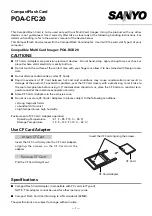
Type
Usage
Maximum capacity
Virtual Volume (VVOL)
A VVOL is a VMware vSphere dedicated capacity virtualization
volume. Operations can be simplified by associating VVOLs with
virtual disks.
Its volume type is FTV.
128TB
Deduplication/Compression
Volume
This volume is a virtual volume that is recognized by the server
when the Deduplication/Compression function is used. It can be
created by enabling the Deduplication/Compression setting for a
volume that is to be created. The data is seen by the server as
being non-deduplicated and uncompressed. The volume type is
TPV.
128TB
Wide Striping Volume (WSV)
This volume is created by concatenating distributed areas in from 2
to 64 RAID groups. Processing speed is fast because data access is
distributed.
128TB
ODX Buffer volume
An ODX Buffer volume is a dedicated volume that is required to use
the Offloaded Data Transfer (ODX) function of Windows Server 2012
or later. It is used to save the source data when data is updated
while a copy is being processed.
It can be created one per ETERNUS AF.
Its volume type is Standard, TPV, or FTV.
1TB
*1:
When multiple volumes are concatenated using the LUN Concatenation function, the maximum capacity is also 128TB.
*2:
The capacity differs depending on the copy source volume capacity.
After a volume is created, formatting automatically starts. A server can access the volume while it is being
formatted. Wait for the format to complete if high performance access is required for the volume.
Caution
•
In the ETERNUS AF, volumes have different stripe sizes that depend on the RAID level and the stripe
depth parameter.
For details about the stripe sizes for each RAID level and the stripe depth parameter values, refer to
"ETERNUS Web GUI User's Guide".
Note that the available user capacity can be fully utilized if an exact multiple of the stripe size is set for
the volume size. If an exact multiple of the stripe size is not set for the volume size, the capacity is not
fully utilized and some areas remain unused.
•
When a Thin Provisioning Pool (TPP) is created, a control volume is created for each RAID group that
configures the TPP. Therefore, the maximum number of volumes that can be created in the ETERNUS AF
decreases by the number of RAID groups that configure a TPP.
•
When the Flexible Tier function is enabled, 64 work volumes are created (for the ETERNUS AF150 S3/
AF250 S3, 32 work volumes). The maximum number of volumes that can be created in the ETERNUS AF
decreases by the number of work volumes that are created.
•
When a Flexible Tier Sub Pool (FTSP) is created, a control volume is created for each RAID group that
configures the FTSP. Therefore, the maximum number of volumes that can be created in the ETERNUS AF
decreases by the number of RAID groups that configure an FTSP.
•
When using the VVOL function, a single volume for the VVOL management information is created the
moment a VVOL is created. The maximum number of volumes that can be created in the ETERNUS AF
decreases by the number of volumes for the VVOL management information that are created.
2. Basic Functions
RAID Functions
28
Design Guide
Содержание ETERNUS AF S3 Series
Страница 204: ......
















































